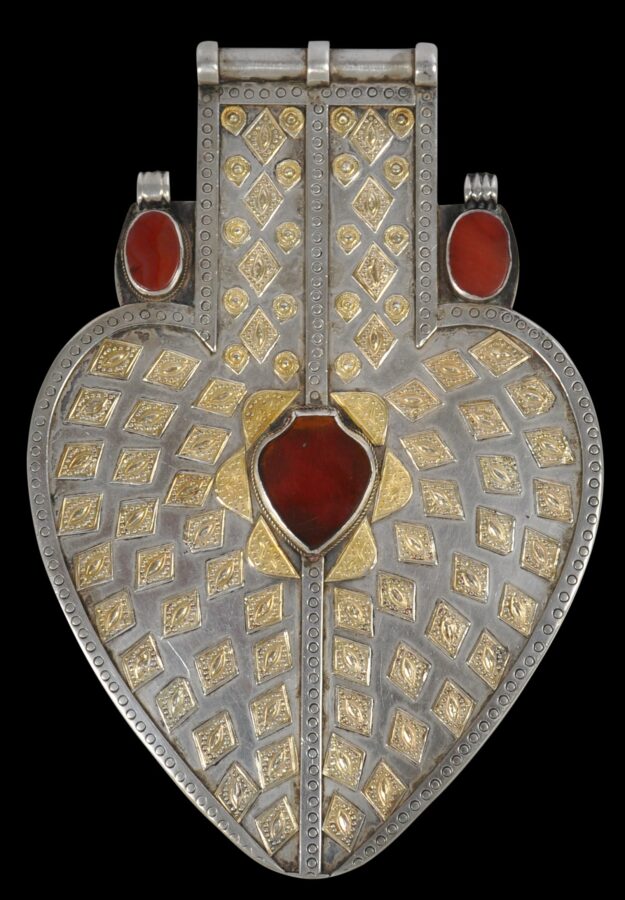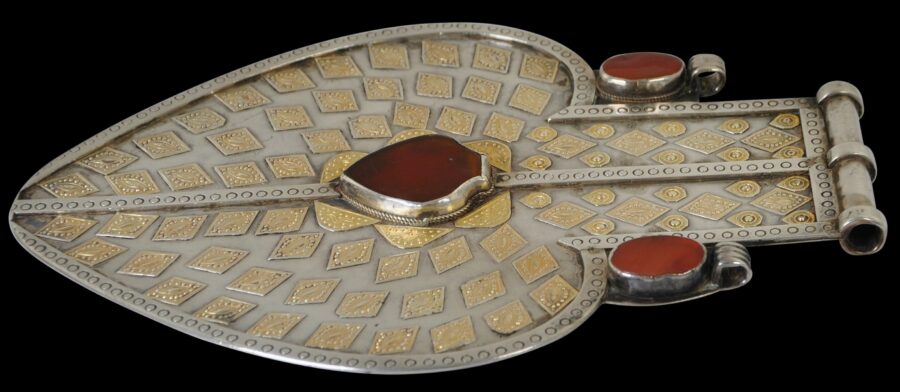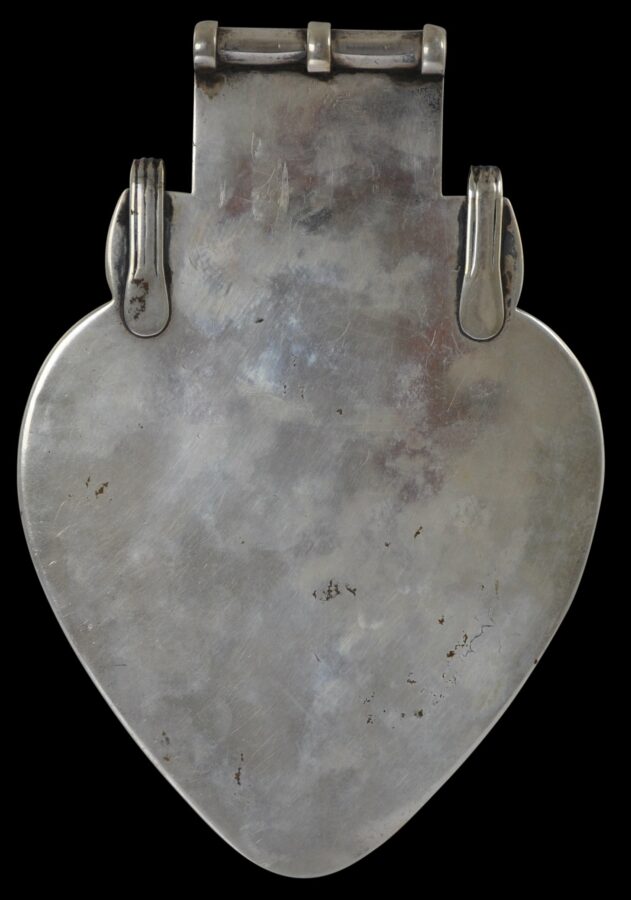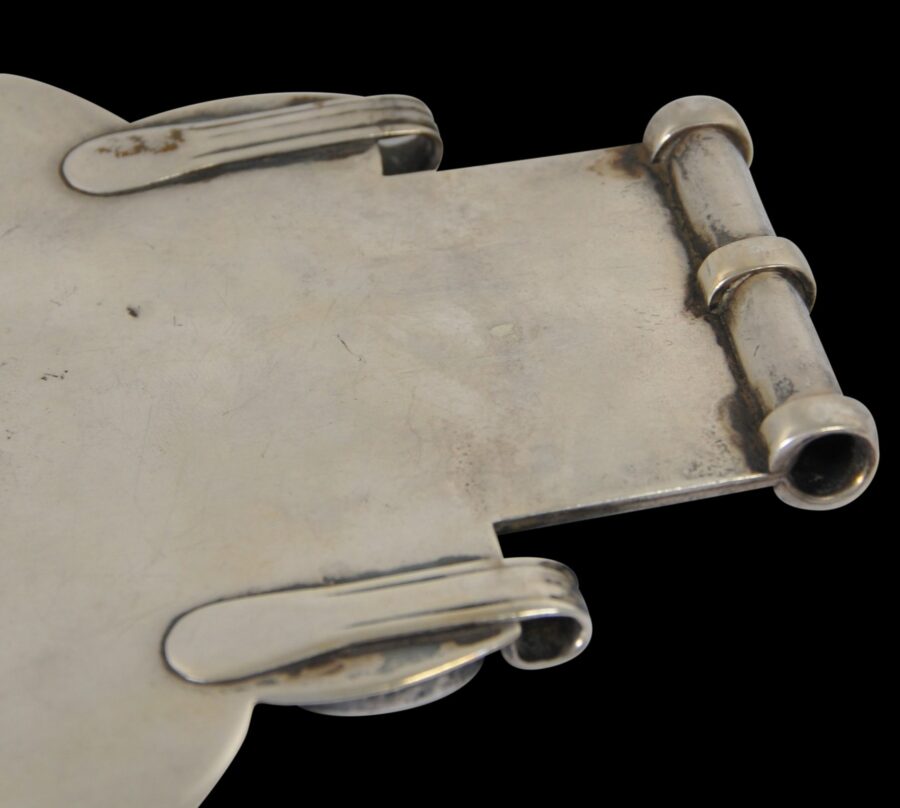The heart-shaped plaque is from the Ersari people who live in Central Asia, most particularly in They live mainly in Turkmenistan, Afghanistan and Pakistan. They are descendants of the Oghuz Turks. The spear-headed shape served partly as a protective or talismanic device designed to repel the evil eye. Typically they were worn on the back, rather than the front.
It is of solid, thick, high-grade silver that has been stamped and decorated with dozens of applied fire-gilded plaques, each embossed with seed-like motifs.
The two upper oval-shaped plaques are solid red agate or carnelian, in box settings. The central red plaque is either glass or resin.
The upper section also has three silver tubes to allow suspension. These show good wear.
The fire gilding that has been used is characteristic of Central Asian jewellery. The process involved the application of an amalgam of mercury and gold to the surface of the silver. Heating causes the mercury to evaporate leaving a gold layer fixed to the surface. The process was extremely dangerous on account of the mercury fumes.
Carnelian stones were believed to protect the wearer against miscarriage and disease. Red itself was associated with happiness and fertility. Carnelians also have a special place in Islam – the Prophet Mohamed is believed to have worn a silver ring mounted with a carnelian stone.
The pendant is in excellent condition with wonderful wear and patina to demonstrate its age.
References
van Cutsem, A., A World of Head Ornaments: Africa, Asia Oceania, America, Skira, 2005.
Geoffrey-Schneiter, B., Bijoux des Toits du Monde de la Chine au Caucase, Foundation Baur, Musee des Artes D’Extreme-Orient/5 Continents, 2012.
Ghose, M. (ed.), Vanishing Beauty: Asian Jewelry and Ritual Objects from the Barbara and David Kipper Collection, Art Institute of Chicago, 2016.
Hoek, C., et al, Ethnic Jewellery: From Africa, Asia and Pacific Islands, Pepin Press, 2004.
Seiwert, W.D., Jewellery from the Orient: Treasures from the Bir Collection, Arnoldsche Art Publishers, 2009.





